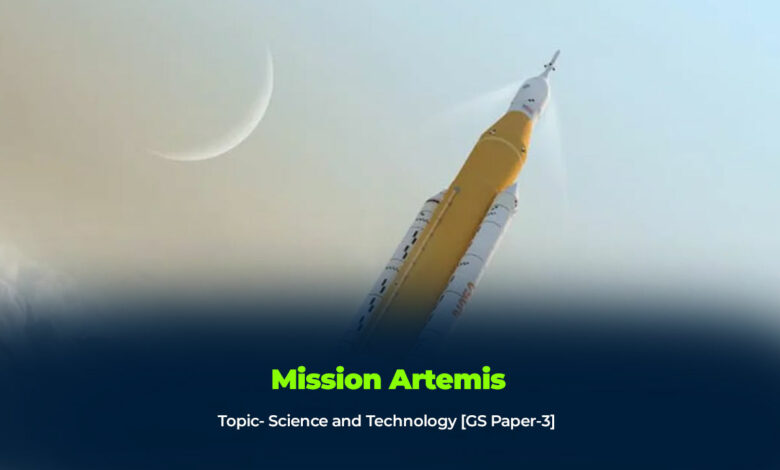
Context- NASA’s latest mission to the Moon is named after an ancient lunar goddess turned feminist icon.
Mission Artemis –
- It is one of the space exploration programs of NASA.
- The programme aims to increase women’s participation in space exploration as 30% of its engineers are women.
- Artemis mission will carry two mannequins designed to study the effects of radiation on women’s bodies so that NASA can learn how to protect female astronauts better.
- Female astronauts are currently less likely to be selected for missions than men because their bodies tend to hit NASA’s maximum acceptable threshold of radiation earlier.
- Hence NASA expects to bring the first woman and person of colour to the Moon on Artemis III sometime after 2024.
- The program’s first step will be the upcoming test flight of the Moon rocket, known as the Space Launch System (SLS), with the Orion capsule on top where astronauts will sit during future missions.
- This uncrewed flight, during which Orion will swing around the moon before returning to Earth, is to wring out any issues with the spacecraft before putting people on board.
- The mission also functions as a proving ground for technologies needed for a much longer trip to Mars.
- It is also expected that the companies will jump-start looking to set up a steady business of flying scientific instruments and other payloads to the moon, and to inspire students to enter science and engineering fields.
Why is the mission named after Artemis?
- The Greeks and Romans associated Artemis with the Moon, and she has also become a modern-day feminist icon.
- Artemis was a major deity in ancient Greece, worshiped at least as early as the beginning of the first millennium B.C., or even earlier. She was a daughter of Zeus, the chief god of the Olympians, who ruled the world from the summit of Mount Olympus. She was also the twin sister of Apollo, god of the Sun and oracles.
- Her independence and strength have long inspired women in a wide range of activities. Her poems emphasize women’s freedom and autonomy.
- As the goddess of animals and the wilderness, Artemis has also inspired environmental conservancy programs, in which the goddess is viewed as an example of a woman exercising her power by caring for the planet.
- With the rise of feminism, Artemis has become an icon of feminine power and self-reliance.
- Hence the name itself depicts women Empowerment, particularly in the field of astronomy.
History behind NASA naming its missions after mythological figures-
- NASA has a long history of naming its missions after mythological figures.
- Since the 1950s, many rockets and launch systems have been named after Greek sky deities, like Atlas and Saturn, whose Greek name is Cronos.
- In Greek mythology, Titans represent the untamed, primordial forces of nature, and so they evoke the prodigious vastness of space exploration.
- Although the Titans were known for their immense strength and power, they were also rebellious and dangerous and were eventually defeated by the Olympians, who represent civilization in Greek mythology.
- Following the advent of human space flight, NASA began naming missions after children of Zeus who are associated with the sky.
- Similarly the Mercury program, active from 1958 to 1963, was named after Hermes’ Roman counterpart, the messenger god who flies between Olympus, Earth and the underworld with his winged sandals.
- Starting in 1963, the three-year-long Gemini program featured a capsule designed for two astronauts and was named after the twin sons of Zeus – Castor and Pollux, known as the Dioscuri in Greek – who were cast in the stars as the constellation of Gemini. They were regularly represented with a star above their heads in Greek and Roman art.
- The space shuttle programme, which lasted from 1981 to 2011, diverted from mythological monikers, and the names Columbia, Challenger, Discovery, Atlantis and Endeavour were meant to evoke a spirit of innovation.





.png)



